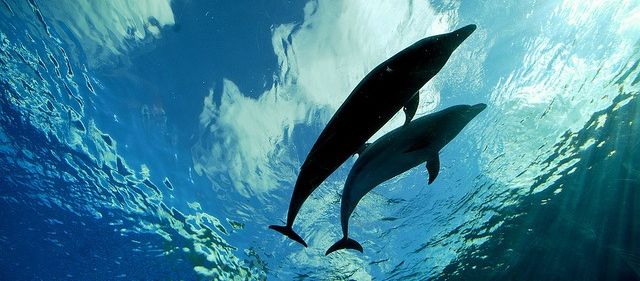Why whales and dolphins should qualify as ‘non-human people’
They can understand numbers and abstract concepts and have their own distinct culture and traditions
Share

Kate Lunau is covering the 2012 annual meeting of the American Association for the Advancement of Science in Vancouver, a gathering of some of the world’s finest brains and celebrities of science. On Feb. 16-20, Lunau will bring you a sneak peak of the latest research and findings, posting to Macleans.ca on anything from healthcare and climate change, to food security, and more. Follow Kate on Twitter:@Katelunau , #AAAS, #AAASmtg.
A U.S. judge recently dismissed a claim from PETA, an animal rights group, that captive killer whales are “slaves” who should be set free. But this afternoon at the AAAS Meeting in Vancouver, a panel of researchers presented compelling evidence that whales and dolphins should qualify as “non-human people,” or individuals with self-awareness and a set of rights, to be protected.
Lori Marino of Emory University, who’s spent over 20 years studying cetacean brains, pointed out that whales and dolphins have among the biggest (for their size) and most complex brains on the planet. Dolphins, she said, have shown evidence that they can understand numbers, abstract concepts, and can recognize themselves in a mirror—they’ve even been seen using tools to catch fish. Whale species, too, have their own distinct culture and traditions. Marino cited the work of Dalhousie University’s Hal Whitehead, a pioneer in sperm whale research, whose work unraveling these whales’ cultural traditions has been previously covered in Maclean’s.
In captivity, whales can suffer all sorts of stress effects, from over-aggression to stomach ulcers, Marino said, pointing to the case of the killer whale who killed a SeaWorld trainer. Orcas in the wild can live 80 to 100 years, she said, but in captivity, live to be about 25.
Kari Koski of the Whale Museum in Friday Harbor, Wash. spoke about the killer whale populations that live off the coast of the Pacific Northwest, noting that they have their own ceremonies and traditions, too. As the University of British Columbia’s John Ford has shown, different groups of killer whales can have their own distinct dialects, much like sperm whales and other species do. According to Koski, killer whales have been observed participating in birth and death rituals, like a grieving mother who stayed with her stillborn baby while other members of her group swam beside her.
The more we understand about these complex creatures, the more it seems imperative to protect them from threats like Japanese whaling, and other forms of abuse. In 2010, in Helsinki Finland, a Declaration of Rights for Cetacieans was drafted, which was presented here. “We affirm that all cetaceans as persons have the right to life, liberty and wellbeing,” it says.